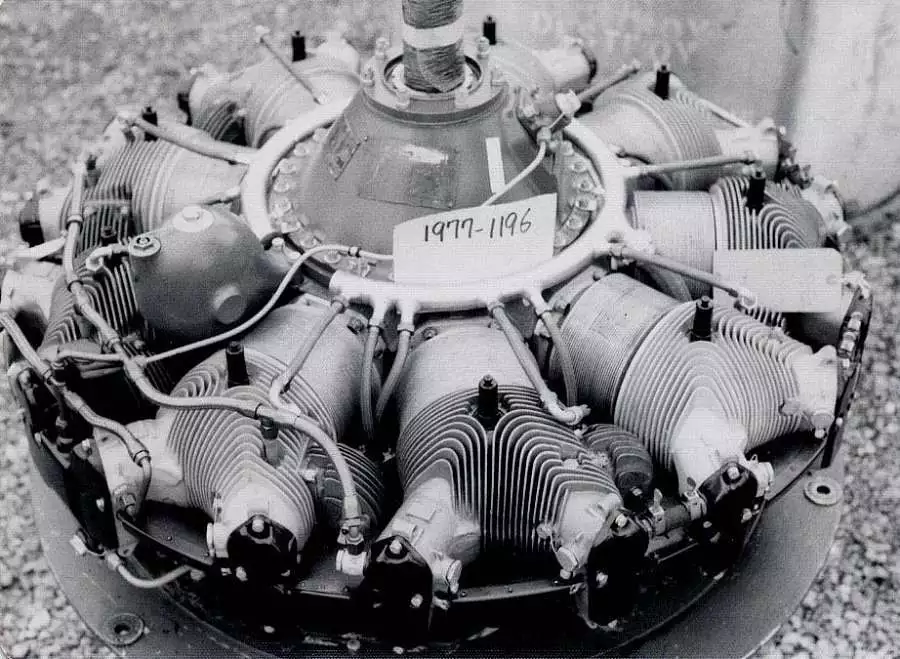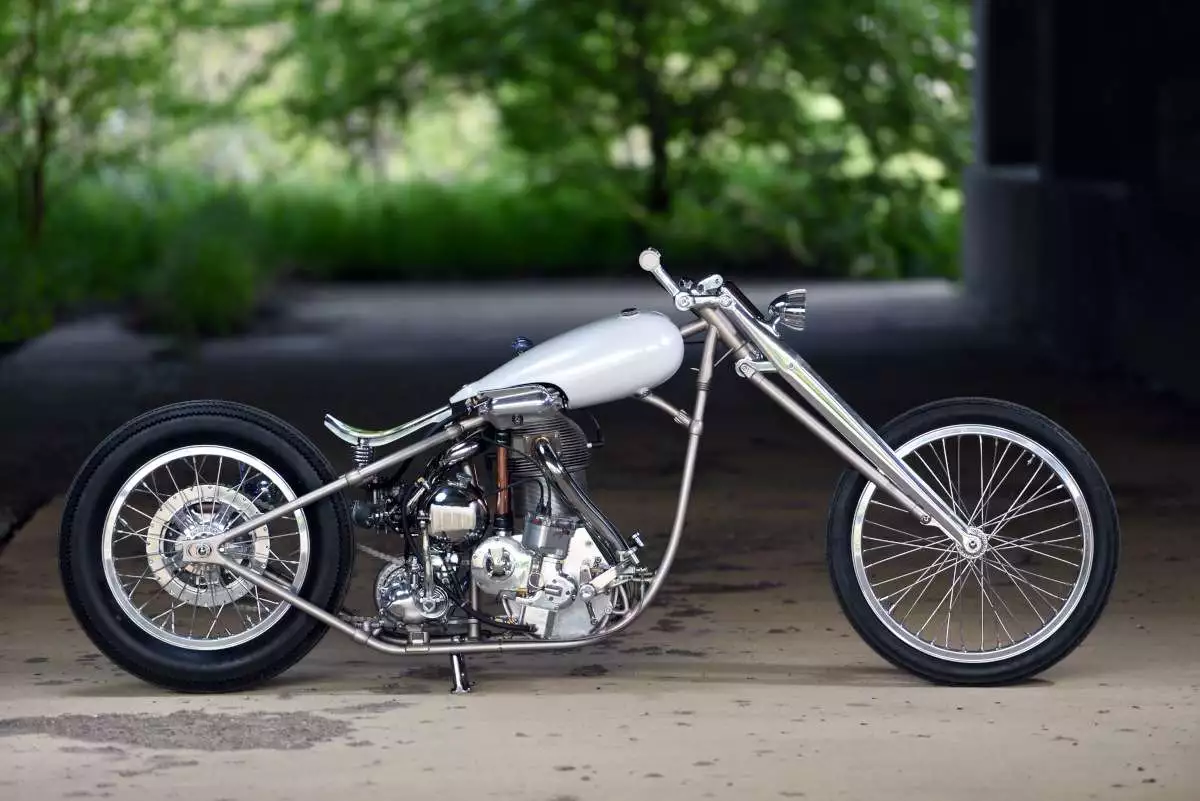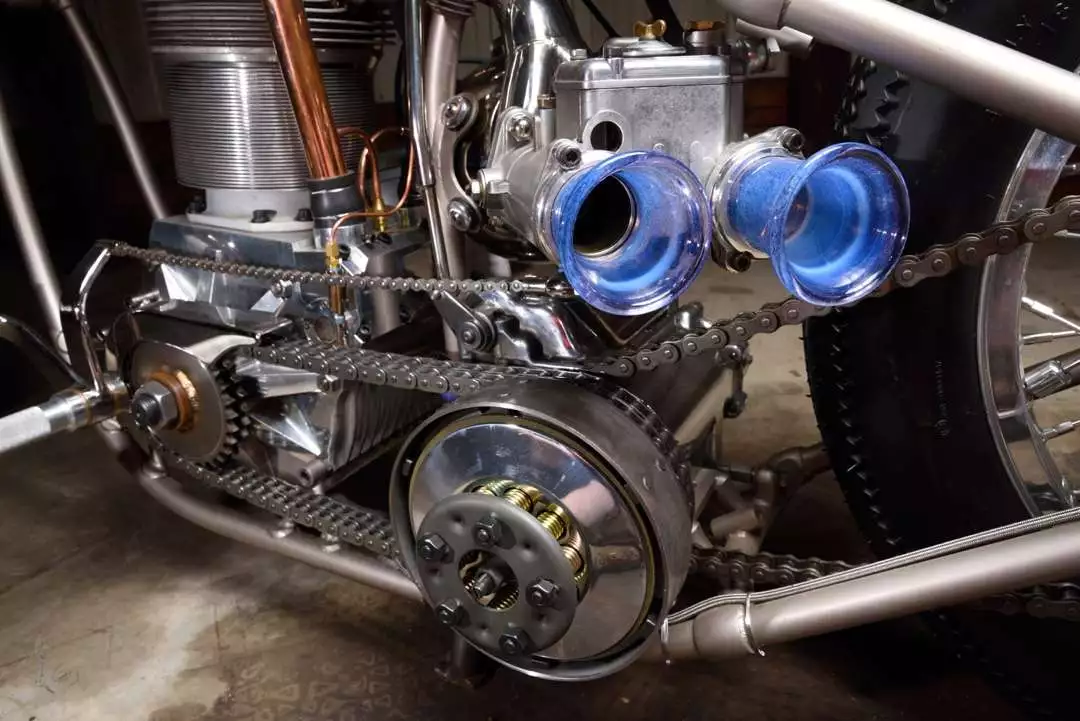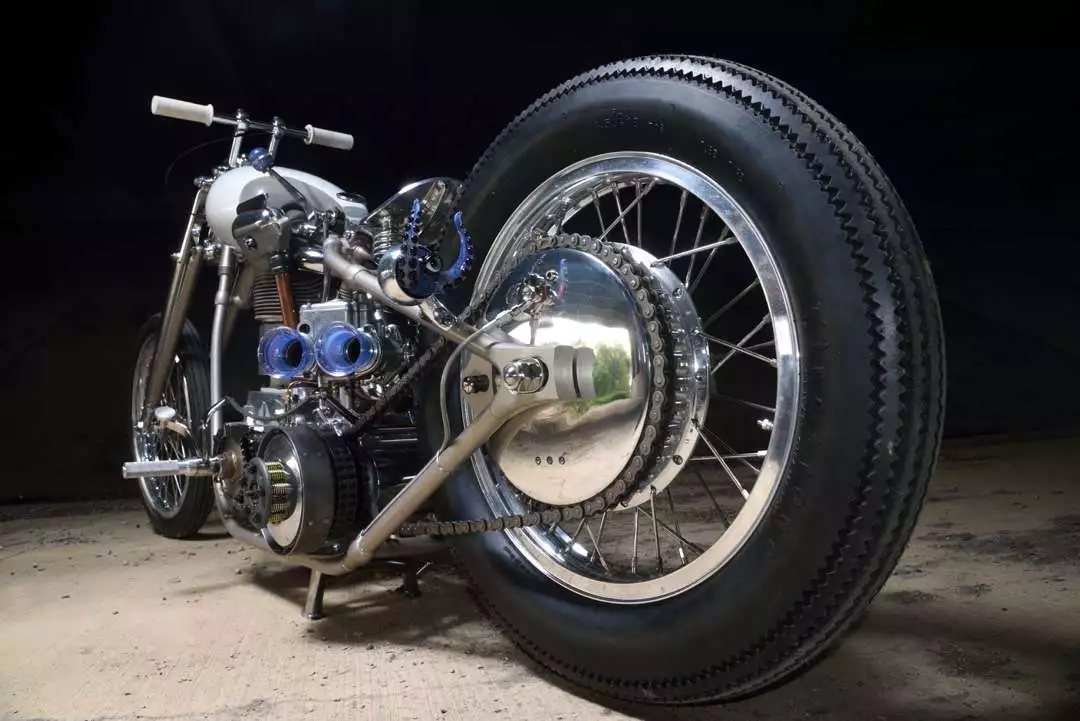Based on a Wright R-975 Whirlwind radial engine, the Hackel-Wright Chopper is unlike any motorcycle you've seen before. It borrows components from Harley and Toyota and is built by a guy named Al Hackel.
Hackel does general fabrication, prototyping, and agricultural maintenance out of a small workshop in his backyard. Originally, he intended to put together a Harley Knucklehead. Until he found out how much even the most wound-up Knuckles cost. Then he decided to think outside the box. “I found the [Wright] cylinder head on eBay and thought it was pretty neat looking so I decided to build a motor around it,” remarks Hackel.
Wright Aeronautical originally designed the Wright R-975 Whirlwind, which was a series of nine-cylinder, 975-cubic-inch radial aircraft engines, all manufactured between 1929 and the 1950s. It was rated between 300 and 550 horsepower, varying with the model, and although the R-975 was intended for use in aircraft, it was employed to power anything from helicopters and tanks to fighter jets and airliners.

Some of the most prominent uses include the Ford Trimotor, Beechcraft Staggerwing, M18 Hellcat, and M4 Sherman tank. The R975-26-46, a 550-hp helicopter motor, was the most powerful version of this Wright-designed, Continental-built engine. It powered the UH-25 Army Mule, also known as the HUP Retriever, a single-engine tandem-rotor SAR helicopter with a basic configuration similar to the more well-known CH-47 Chinook.
If you were to even consider getting your hands on one of these engines for a custom build, let me stop you right there. For starters, unlike a traditional reciprocating engine, a radial engine needs a completely unique crank drive. In essence, the whole thing below the cylinder would need to be developed again. This would include a new valve train with a camshaft at the bottom, a crankshaft and housing, and a proper lubrication system.

For the engine's construction, Hackel had to put together a custom case, conrod, and five-piece crankshaft while his mate Justin Leineweber ground the bespoke cam. The result is a nearly perfect 1700cc single-cylinder engine, which Hackel mated to an original 1947 Harley 4-speed transmission.
In the drive, a total of three chains are deployed to perform different functions. A duplex chain serves as the primary drive between the crankshaft and transmission while the second chain serves as a secondary drive to the rear wheel. A stiffened third chain serves as a clutch linkage to the foot clutch. Gearing is all manual for four gear ratios while a kickstarter is the only way to get the motor going. You better hope it doesn’t misfire.

Hackel puts a Girder fork in the steering head based on the Vincent Girdraulic model, in order to offer some level of riding comfort. It is essentially a trapezoidal fork that Vincent equipped with a hydraulic spring damper in the mid-1940s to replace the friction damper and spring combo used back then. Jesse Briggs of the Maritimer Glassworks in Canada blew the glass for the headlamp, taillight, velocity stacks, and shift knob.
As for the brake, Hackel employed the drum brake from a Toyota Matrix, a scaled-down Corolla designed for the Canadian market, to put together the rear wheel and drive. It also serves as the rear spoke wheel's foundation. The bespoke fuel tank has asymmetric cutouts to fit the hand-shifter on one end and the cylinder head on the other, and is surrounded by narrow bars and a sprung seat.

“Equal parts abject terror and unbelievable euphoria. It will shake your fittings loose, but tracks smooth down the road” is how Hackel describes actually riding the motorcycle. He calls it ‘Thunder at 10 Hz’. Not a bad name for a 1700cc single-cylinder chopper.
This Hackel-Wright chopper was featured at both the 2024 Handbuilt Show and One Moto Show.







